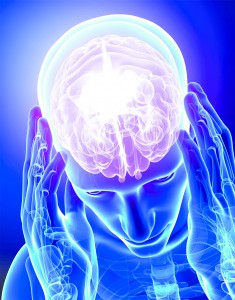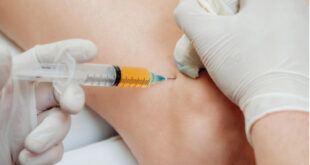By Dr. M. Damas
 Stroke is defined as an onset of focal or global neurological symptoms caused by ischemia or hemorrhage within or around the brain resulting from diseases of the cerebral blood vessels. When an interruption of oxygen occurs, the nerve cells can get damage and they die as a result and part of the body that they provide function for will not work. The damage cause by a stroke is usually permanent because brain cells cannot regenerate. Stroke is the third leading cause of death in the U.S. It is the most common cause of disability and affects over 500,000 people per every year.
Stroke is defined as an onset of focal or global neurological symptoms caused by ischemia or hemorrhage within or around the brain resulting from diseases of the cerebral blood vessels. When an interruption of oxygen occurs, the nerve cells can get damage and they die as a result and part of the body that they provide function for will not work. The damage cause by a stroke is usually permanent because brain cells cannot regenerate. Stroke is the third leading cause of death in the U.S. It is the most common cause of disability and affects over 500,000 people per every year.
The key to preventing a stroke is knowing your risk and having regular medical checkups. Some risk factors you can change or treat, and others you can not. The mon-modified risk factors are age, sex, race and heredity. The modified risk factors are hypertension, diabetes, lipids, smoking, alcohol and obesity. There are other risk factors including TIA (transient ischemic attacks), atrial fibrillation, cardiac disease, history of prior stroke, medications, carotid stenosis and pregnant women etc.
High blood pressure is the single most important risk factor for stroke. If it’s 140/90 or above, it’s high. Contact your doctor about how to control it.
Normal blood pressure is defined as less than 120/80. There are things that you can do to lower your blood pressure such as eat a healthy diet that is low in salt, low in saturated fat and cholesterol, eat a diet high in fruits and vegetables, enjoy regular physical activity, take your medications as prescribed and decrease the stress in your life. It is also important to lose weight if you’re overweight which will help to decrease your blood pressure. There are a number of medications that was used for stroke prevention including Aspirin, Plavix, Aggrenox, Coumadin etc. Follow-up with your doctor.
Some of the warning signs of stroke are the following; sudden weakness or numbness of the face, arm or leg, especially on one side of the body, confusion, trouble speaking or understanding spoken words, trouble seeing in one or both eyes, trouble walking, dizziness, loss of balance or coordination. The hemorrhagic form of stroke can present with severe headaches.
Learn to recognize a stroke because “time lost is brain lost”. Today, there are treatments (tissue plasminogen activator) that can reduce the risk of damage from the most common type of stroke, but only if you get help quickly – within 3 hours of your first symptoms. Call 911 immediately, if you or someone you know is experiencing these warning signs!
MARGARETTE DAMAS, M.D.
Dr. M. Damas is the director of Sea Blue Neurology Center, P.A, which provide medical concierge service. House call provided.
Sea Blue Neurology Center, P.A.
3100 Coral Hills Drive, Coral Springs, FL 33065 Ste 308
(954) 796-9060
Check Also
The Mighty Maestro: Bob “Mighty Mite” Toski’s Enduring Legacy at 98
In the warm glow of a spring evening in Delray Beach, Florida, a remarkable celebration …
 South Florida Health and Wellness Magazine Health and Wellness Articles
South Florida Health and Wellness Magazine Health and Wellness Articles




